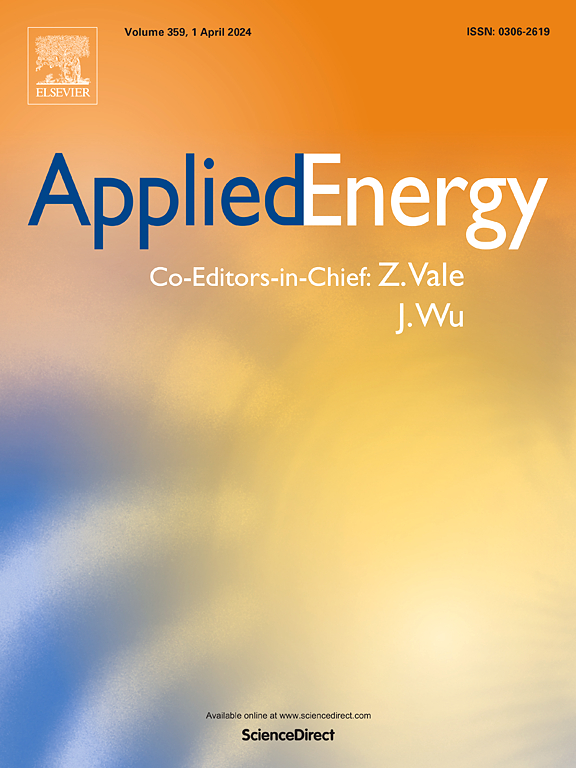负荷预测中的 TimeGPT:大型时间序列模型视角
IF 11
1区 工程技术
Q1 ENERGY & FUELS
引用次数: 0
摘要
机器学习模型在负荷预测方面取得了重大进展,但在历史负荷数据稀缺的情况下,其预测准确性受到限制。受大型语言模型(LLMs)在计算机视觉和自然语言处理方面出色表现的启发,本文旨在讨论大型时间序列模型在历史数据稀缺的负荷预测中的潜力。具体来说,大型时间序列模型是以时间序列生成预训练变换器(TimeGPT)的形式构建的,并在由 1000 亿个数据点组成的海量、多样化时间序列数据集(如金融、交通、银行、网络流量、天气、能源、医疗保健等)上进行训练。然后,利用稀缺的历史负荷数据对 TimeGPT 进行微调,帮助它适应与负荷预测相关的数据分布和特征。仿真结果表明,在几个训练样本稀缺的真实数据集上,TimeGPT 的性能优于常用的负荷预测基准,尤其是在短时间内的前瞻性预测方面。但是,由于 TimeGPT 的性能可能会受到负荷数据和训练数据分布差异的影响,因此不能保证在数据稀缺的情况下,TimeGPT 始终优于负荷预测基准。在实际应用中,运营商可以将历史数据分为训练集和验证集,然后利用验证集的损失来决定 TimeGPT 是否是特定数据集的最佳选择。本文章由计算机程序翻译,如有差异,请以英文原文为准。
TimeGPT in load forecasting: A large time series model perspective
Machine learning models have made significant progress in load forecasting, but their forecast accuracy is limited in cases where historical load data is scarce. Inspired by the outstanding performance of large language models (LLMs) in computer vision and natural language processing, this paper aims to discuss the potential of large time series models in load forecasting with scarce historical data. Specifically, the large time series model is constructed as a time series generative pre-trained transformer (TimeGPT), which is trained on massive and diverse time series datasets consisting of 100 billion data points (e.g., finance, transportation, banking, web traffic, weather, energy, healthcare, etc.). Then, the scarce historical load data is used to fine-tune the TimeGPT, which helps it to adapt to the data distribution and characteristics associated with load forecasting. Simulation results show that TimeGPT outperforms the popular benchmarks for load forecasting on several real datasets with scarce training samples, particularly for short look-ahead times. However, it cannot be guaranteed that TimeGPT is always superior to benchmarks for load forecasting with scarce data, since the performance of TimeGPT may be affected by the distribution differences between the load data and the training data. In practical applications, operators can divide the historical data into a training set and a validation set, and then use the validation set loss to decide whether TimeGPT is the best choice for a specific dataset.
求助全文
通过发布文献求助,成功后即可免费获取论文全文。
去求助
来源期刊

Applied Energy
工程技术-工程:化工
CiteScore
21.20
自引率
10.70%
发文量
1830
审稿时长
41 days
期刊介绍:
Applied Energy serves as a platform for sharing innovations, research, development, and demonstrations in energy conversion, conservation, and sustainable energy systems. The journal covers topics such as optimal energy resource use, environmental pollutant mitigation, and energy process analysis. It welcomes original papers, review articles, technical notes, and letters to the editor. Authors are encouraged to submit manuscripts that bridge the gap between research, development, and implementation. The journal addresses a wide spectrum of topics, including fossil and renewable energy technologies, energy economics, and environmental impacts. Applied Energy also explores modeling and forecasting, conservation strategies, and the social and economic implications of energy policies, including climate change mitigation. It is complemented by the open-access journal Advances in Applied Energy.
 求助内容:
求助内容: 应助结果提醒方式:
应助结果提醒方式:


